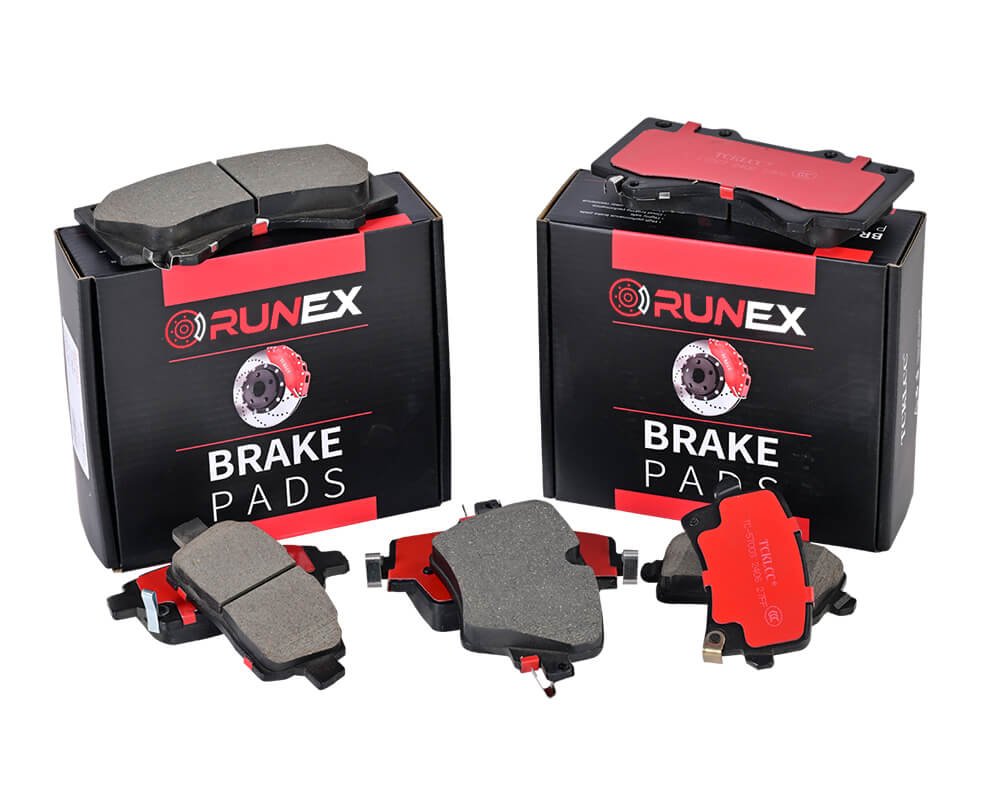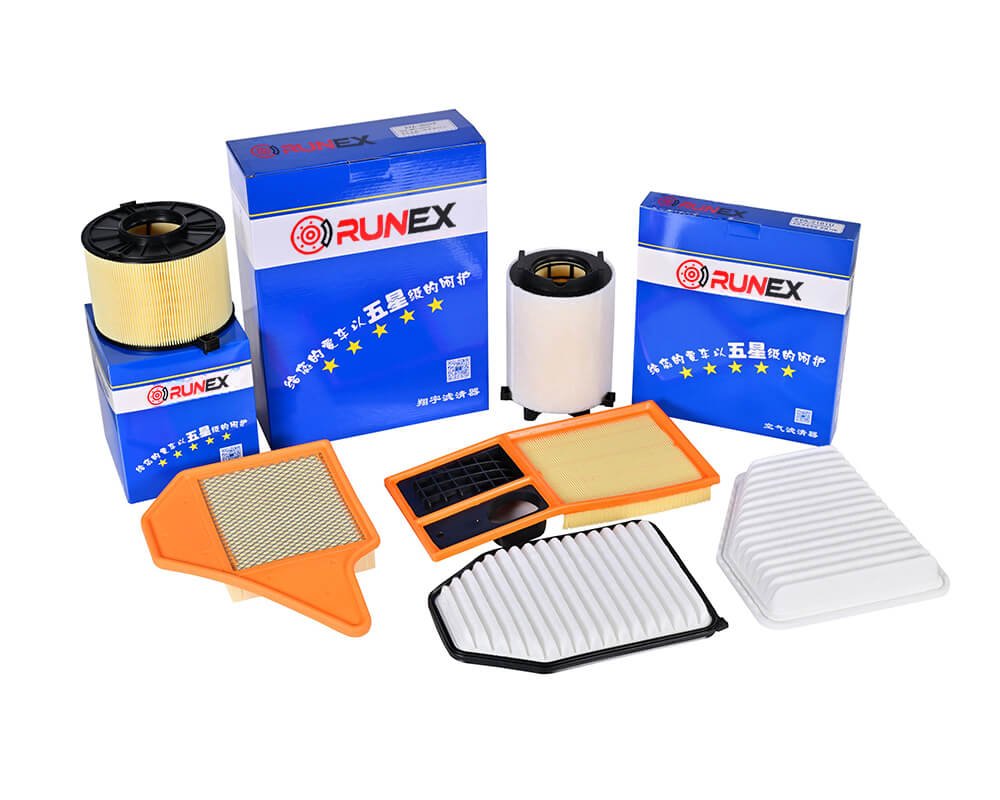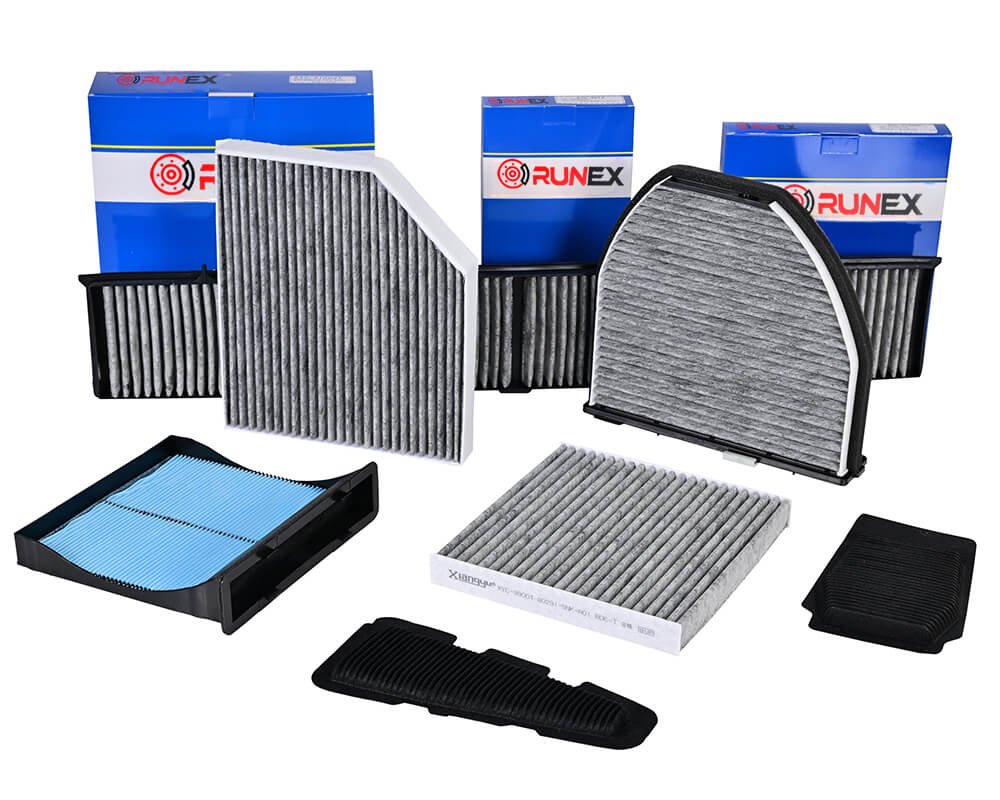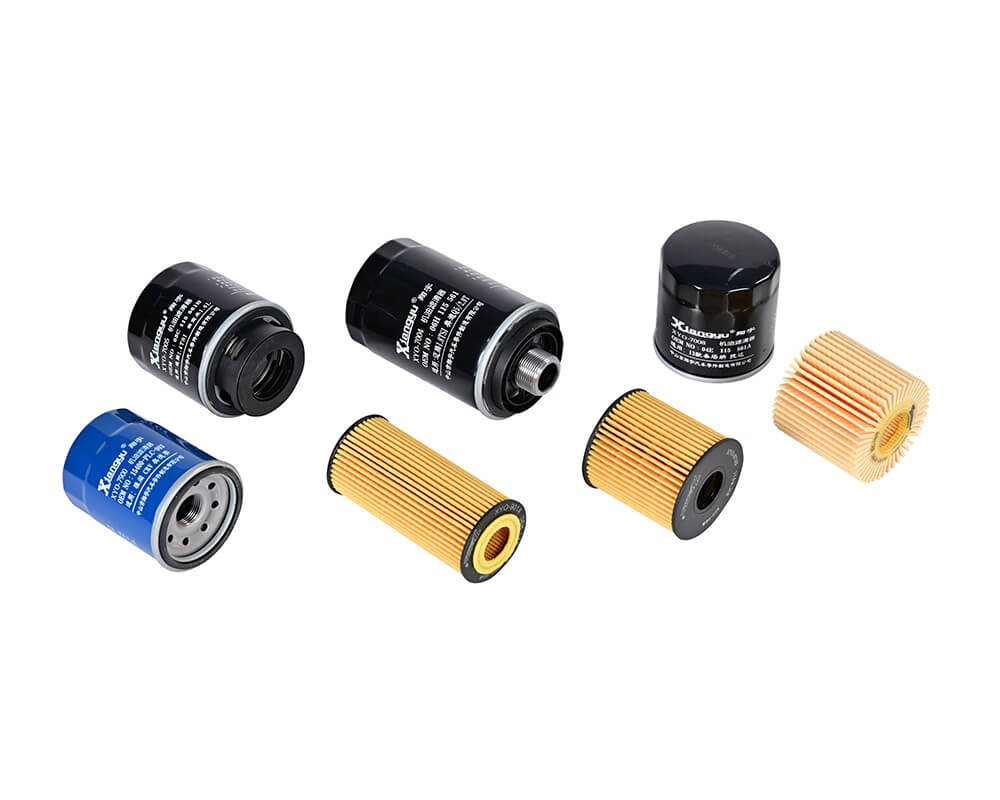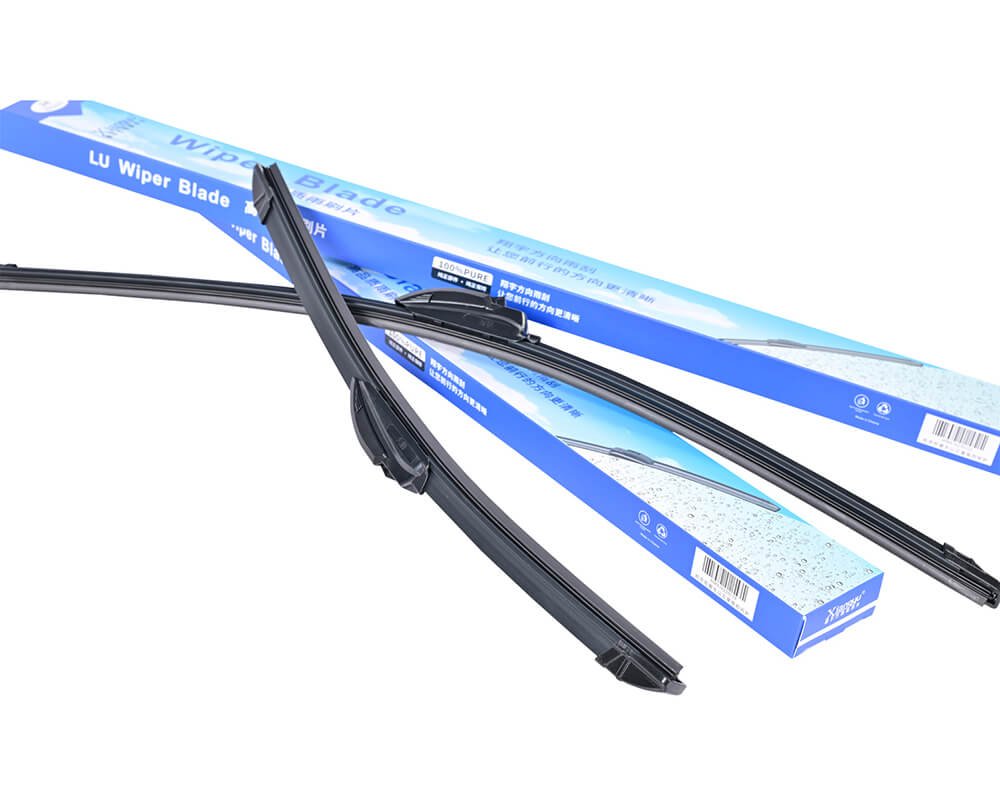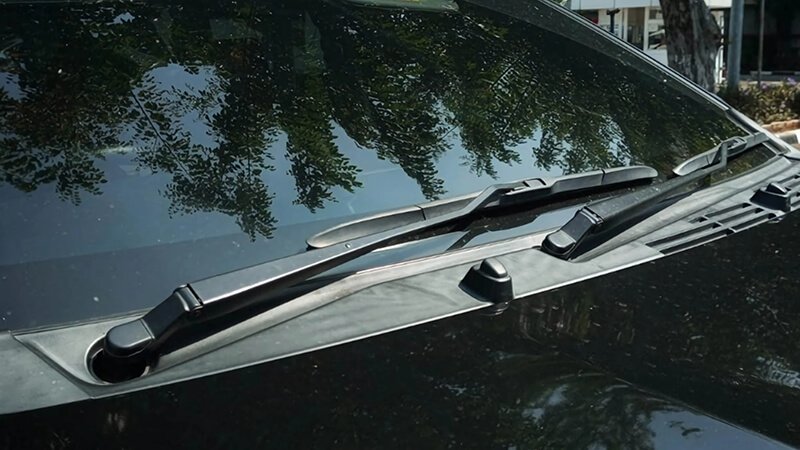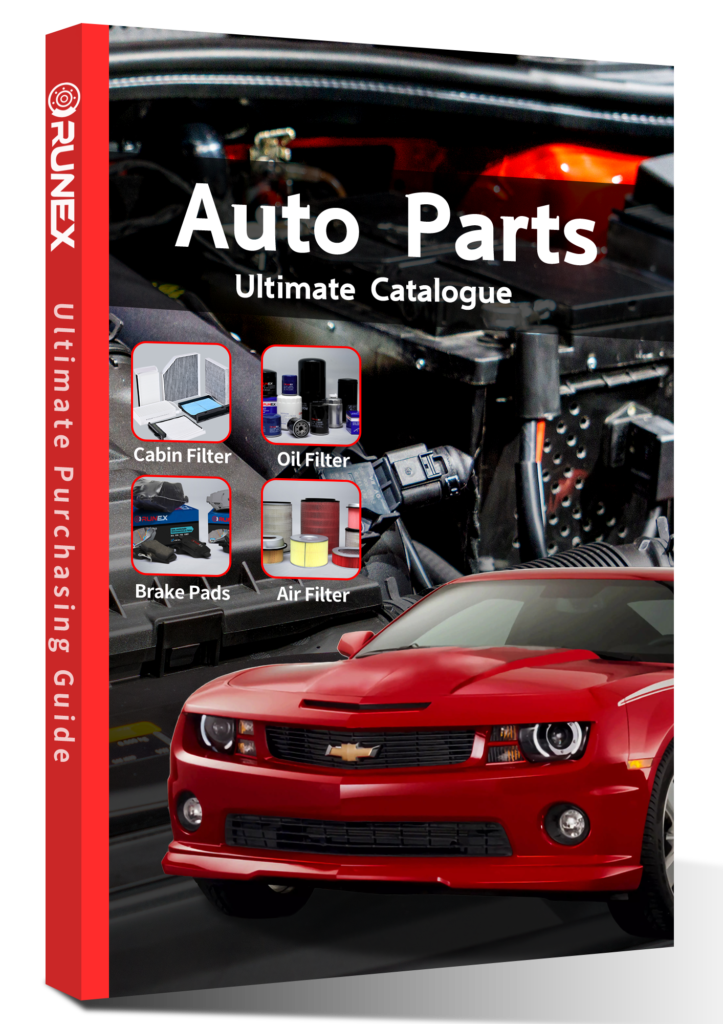Your car looks spotless from the outside, but what about the air your passengers breathe inside? Neglecting a small but critical component like the cabin air filter could cost you more than just comfort—it could hurt your reputation.
The main purpose of a cabin air filter is to clean the air inside your car by removing dust, allergens, and odors, ensuring a healthy and pleasant driving experience.
Most people don’t think twice about their cabin air filter. But when complaints about odors, allergies, or foggy windows pile up—especially in fleets—it becomes clear: this little filter plays a big role. That’s why at Runex Auto, we focus on delivering cabin filters that meet OEM standards and exceed driver expectations.
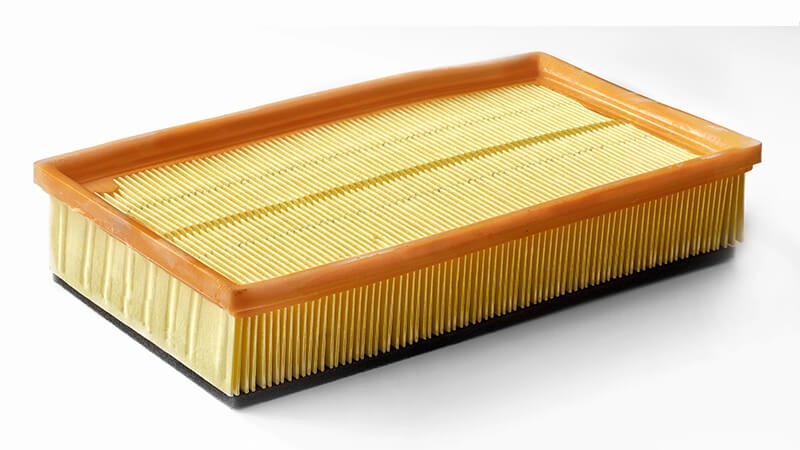
Can I run my AC without a cabin air filter?
Sure, the AC might still blow cold air. But what exactly are you breathing? That’s the real concern. Running your HVAC system without a cabin filter might save a few bucks—until it doesn’t.
Yes, you can run the AC without a cabin air filter, but it’s not safe or smart. It leads to dirty air inside the cabin, clogs the HVAC system, and shortens the lifespan of your AC components.
Why skipping the filter is a bad idea
At Runex Auto, we’ve tested HVAC systems with and without cabin filters. Here’s what we’ve seen:
- Dust invasion: Without a filter, the system pulls in dirt, pollens, and even insects.
- Odors build up: Without carbon filtration, exhaust fumes and cabin odors linger.
- HVAC strain1: Over time, dirt clogs internal parts, causing poor airflow and expensive damage.
Filtered vs. Non-Filtered Cabin Air
| Feature | With Runex Cabin Filter | Without Filter |
|---|---|---|
| Air Quality | Clean, allergen-free | Polluted, dusty |
| HVAC System Efficiency | Smooth airflow, low strain | Clogged vents, system stress |
| Odor Control | Activated carbon blocks smells | Odors circulate freely |
| Long-term HVAC Health | Protected | At risk of failure |
Our carbon cabin filters2 are built with premium synthetic fibers and charcoal granules that don’t just trap particles—they neutralize harmful fumes. And for fleet customers? No filter means unhappy passengers, poor reviews, and more maintenance tickets.

What happens when a cabin air filter is bad?
Out of sight, out of mind. Until you can’t ignore the stale smell, the itchy nose, or the fog that won’t clear. A neglected filter doesn’t just fail—it backfires.
When a cabin air filter goes bad, it clogs the HVAC system, reduces airflow, allows odors and allergens inside, and can even damage the blower motor.
Real problems from a small filter
A taxi fleet manager once told me their cars kept receiving complaints—musty smells, foggy interiors, sneezing passengers. We switched them to Runex carbon cabin filters. Within three weeks, complaints dropped. Retention improved. As he put it: “It’s a tiny part, but it made a huge difference.”
Real problems from a small filter
A taxi fleet manager once told me their cars kept receiving complaints—musty smells, foggy interiors, sneezing passengers. We switched them to Runex carbon cabin filters3. Within three weeks, complaints dropped. Retention improved. As he put it: “It’s a tiny part, but it made a huge difference.”
Symptoms of a Failing Cabin Air Filter
| Symptom | Cause | Impact |
|---|---|---|
| Weak Airflow | Clogged filter media | Poor ventilation, driver fatigue |
| Bad Smell in Cabin | Bacteria and mold build-up | Negative passenger experience |
| Foggy Windows | High humidity trapped inside | Dangerous driving conditions |
| Allergy Flare-ups | Pollen/dust bypassing filter | Health risk for occupants |
At Runex, our filters4 go through pressure drop and airflow efficiency tests. That’s how we ensure uninterrupted performance, even under high-demand HVAC cycles. No shortcuts—just clean air and satisfied drivers.
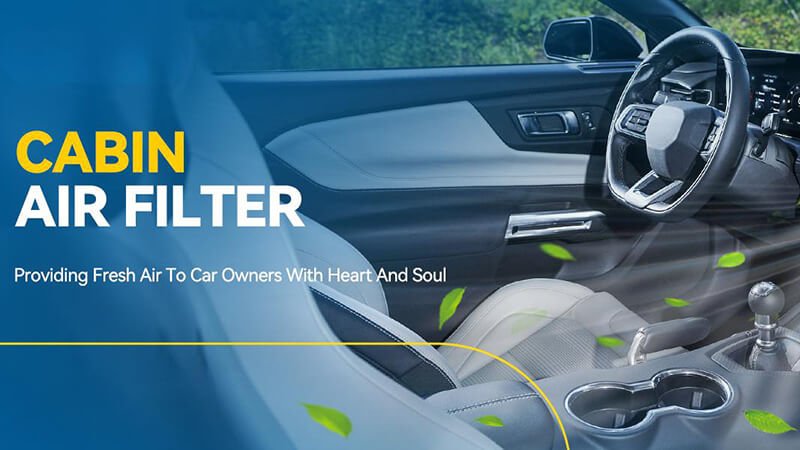
Does a cabin air filter affect car performance?
At first glance, no. It doesn’t touch the engine or the wheels. But dig a little deeper, and you’ll see the connection between clean air, HVAC load, and fuel economy.
A cabin air filter doesn’t directly affect engine performance, but it impacts HVAC efficiency, which can influence overall energy use and passenger comfort.
Indirect effects that matter
Our OEM partners often ask whether upgrading to a carbon filter increases airflow resistance5. The answer: not with Runex. We design for low pressure drop without sacrificing filtration. That means the HVAC doesn’t work harder than it needs to—and the driver stays comfortable without extra load on the system.
Performance Considerations
| Aspect | With Runex Filter | With Low-Quality Filter |
|---|---|---|
| Airflow Resistance | Optimized for smooth flow | Higher resistance, poor flow |
| HVAC Energy Use6 | Balanced load | Increased compressor load |
| Engine Strain (indirect) | None | Possible increase via HVAC load |
| Cabin Comfort | Stable and clean | Uneven temperature, fogging |
Fleet vehicles idle for hours with AC running. If the filter resists airflow, the HVAC system compensates by running harder. Over time, that burns fuel. That’s why our filters go through both particle retention and flow rate testing—to deliver clean air without making the car work harder for it.
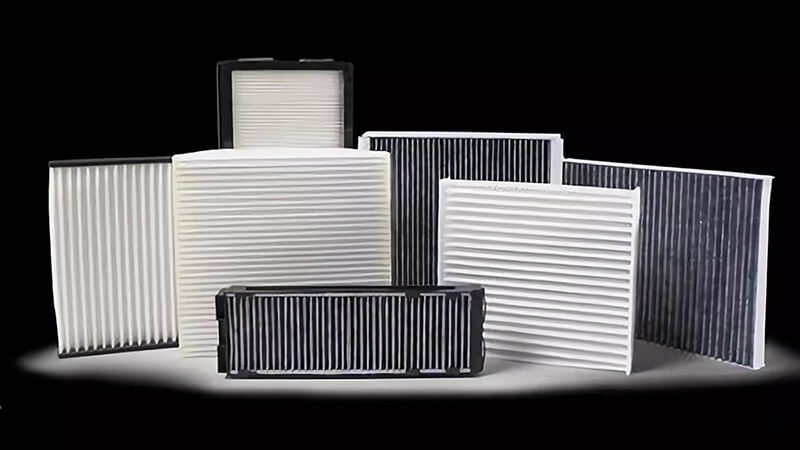
What is the difference between cabin filter and air filter?
Both say “filter.” But one protects you, and the other protects your engine. Mistaking them could cost you—either in cabin air quality or engine damage.
A cabin filter cleans the air inside the vehicle for passengers, while an engine air filter protects the engine by cleaning the air that enters the combustion chamber.
Know the difference. Use the right one.
We’ve had distributors order the wrong filters before. One even installed engine air filters in the HVAC system—airflow dropped, smells stayed, and clients complained. Since then, they always double-check specs before shipping.
Key Differences Between Cabin and Engine Air Filters
| Feature | Cabin Air Filter7 | Engine Air Filter8 |
|---|---|---|
| Location | Behind glovebox or near AC intake | Near engine intake system |
| Function | Cleans air for passengers | Cleans air for combustion |
| Contaminants Blocked | Dust, pollen, odors, smoke | Dust, debris, insects |
| Material Used | Synthetic fiber + activated carbon | Pleated paper or foam |
| Replacement Frequency | Every 12,000–15,000 miles | Every 15,000–30,000 miles |
At Runex Auto, we manufacture both. But we design them differently. Our cabin filters 9 use multi-layer fiber construction and optional activated carbon for odor control. Our engine filters focus on maximizing surface area for airflow and trapping fine dust to protect the combustion chamber.

Conclusion
Cabin air filters may not be the flashiest part of a car, but their impact is real. Clean air, odor-free rides, efficient HVAC systems—all rely on this small but powerful filter. At Runex Auto, we build cabin air filters with fleet operators and end users in mind: clean breathing, long service life, and minimal maintenance. Whether you're managing dozens of taxis or just one family SUV, don't overlook this part. It's not just about air—it's about experience.
-
Understanding HVAC strain can help you maintain your system better and avoid costly repairs. ↩
-
Exploring the benefits of carbon cabin filters can enhance your knowledge of vehicle maintenance and air quality. ↩
-
Discover how Runex carbon cabin filters can enhance air quality and improve passenger comfort in vehicles. ↩
-
Discover how Runex filters enhance air quality and performance, ensuring a healthier and more comfortable driving experience for passengers and drivers. ↩
-
Understanding airflow resistance is crucial for optimizing HVAC efficiency and ensuring comfort in vehicles. ↩
-
Exploring HVAC energy use can reveal ways to enhance vehicle performance and reduce fuel consumption. ↩
-
Understanding cabin air filters is crucial for maintaining air quality in your vehicle, ensuring a comfortable ride. ↩
-
Learn about engine air filters to understand their role in vehicle performance and engine longevity. ↩
-
Find the best quality auto cabin air filter from Runex. ↩



